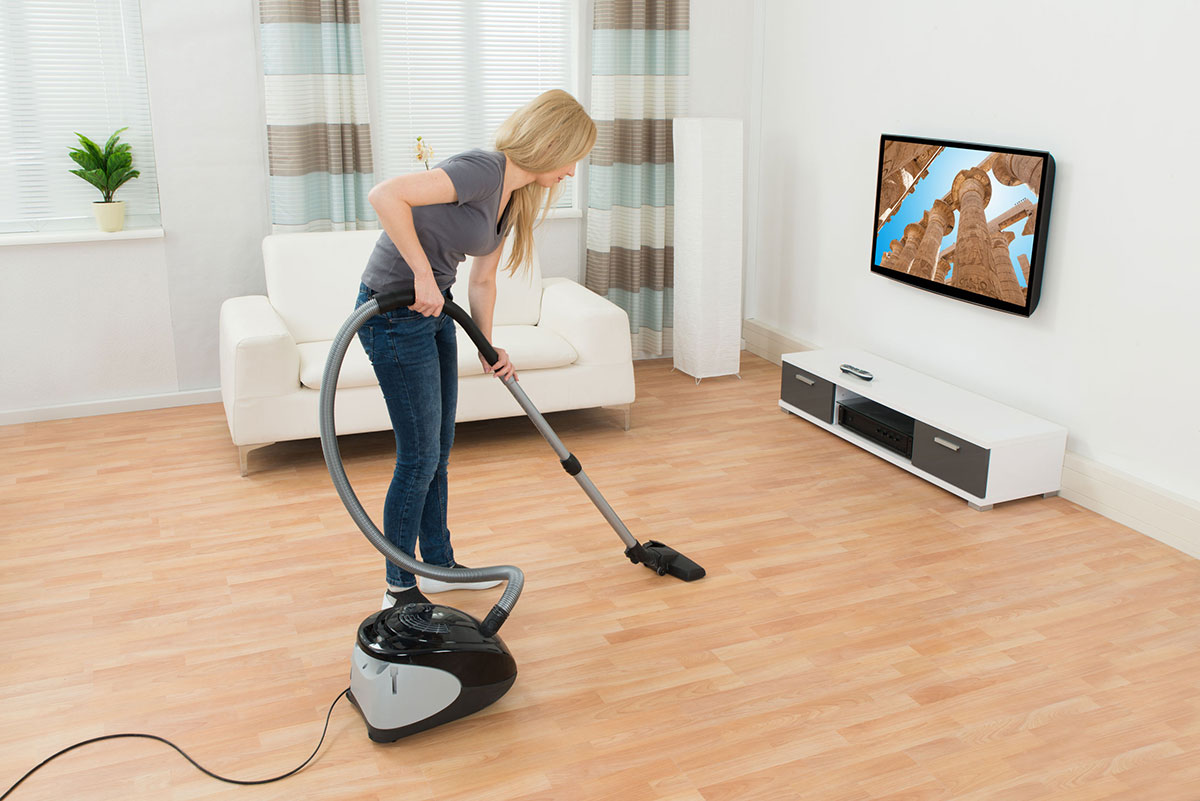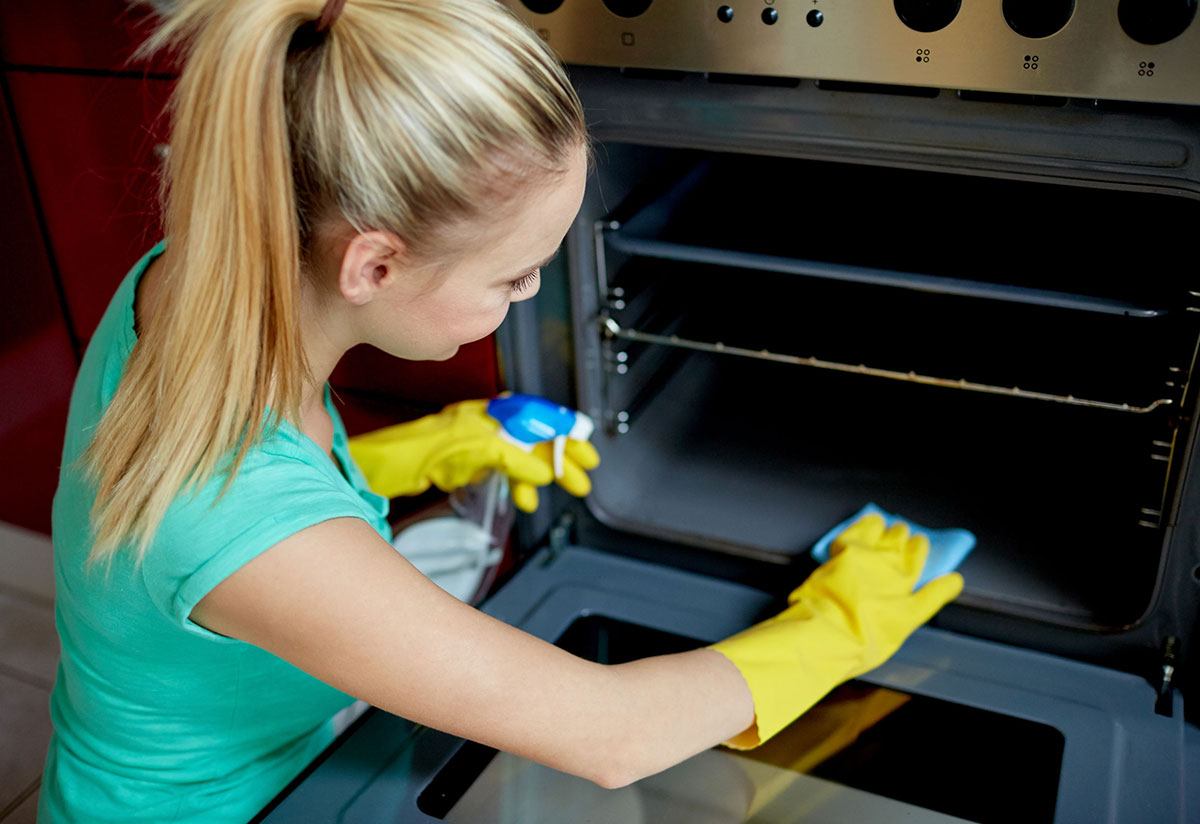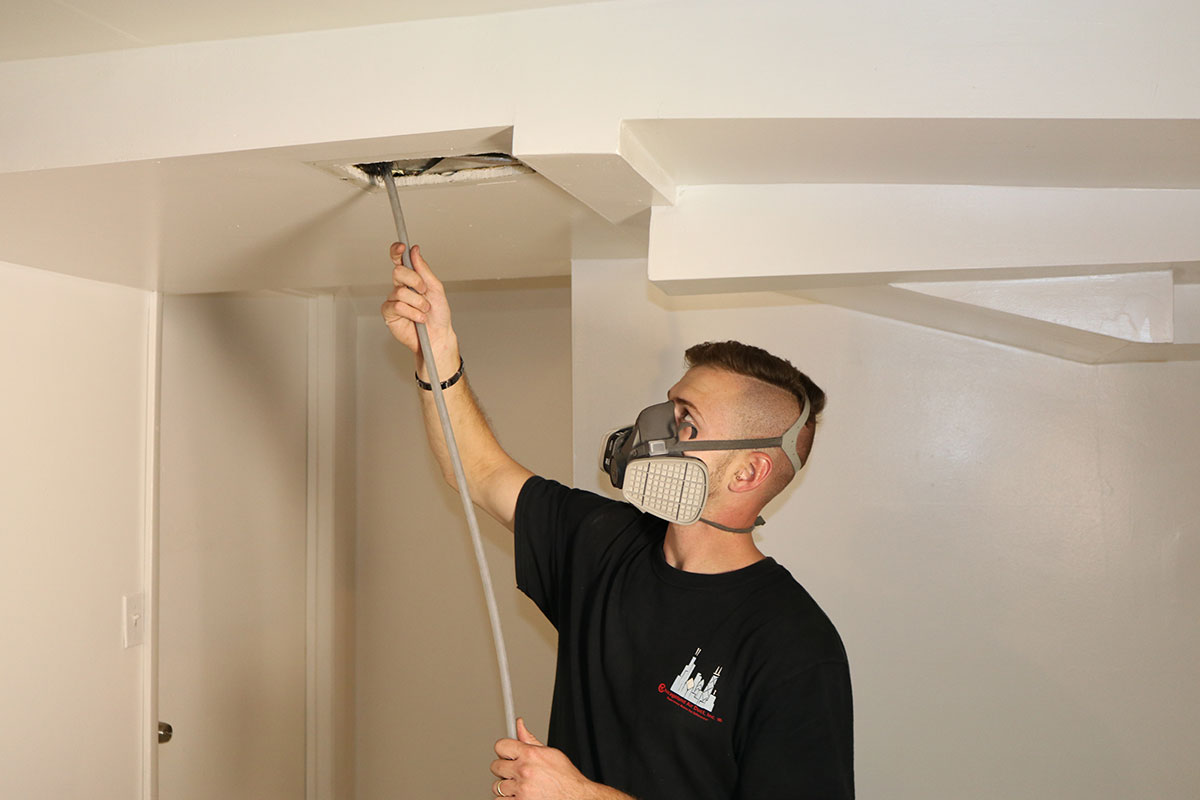
Many homeowners struggle to keep their houses looking neat and tidy. There are many different factors which can affect one’s ability to keep up with housework. Kids are certainly one of them, as is a job that keeps you busy for long hours. In other words, it often comes down to time management and the ability to prioritize. Wouldn’t it be great if there was some kind of home cleaning guide to direct you?
That is one of the reasons we chose to create this step by step house cleaning guide. We break down the most important tasks into four different categories: daily chores, weekly chores, monthly chores, and annual chores. So, the next time you are staring at a disorganized or messy home and wondering where to start, come back to this list and start right here.
Download our home cleaning checklist
Your Daily Chores
When taken as a whole, the daily chores required of the average homeowner will typically take up somewhere between 15 and 30 minutes of your time each day. The size of your home and the size of your household will determine your time frame.
One of the easiest and most direct ways to maintain order and cleanliness in your home is to establish a daily routine. With that in mind, here are the issues in your house that need addressing every single day:
Wash the dishes – If you or the others in your family have a habit of walking dishes over to the sink and leaving them there, you are creating a larger problem than you may realize.
Sure, you are only putting off the inevitable dishwashing session until later, but you are also blocking the kitchen sink. You may have realized that the kitchen sink is an integral part of many other household chores. A cluttered sink ultimately makes for a cluttered house.
Wipe down the kitchen table and kitchen counters –

This is an important task to accomplish not only for the sake of overall neatness, but also for the sake of your health. Bacteria thrives in a kitchen, and the counters and table are the areas where it is most likely to be found.
Make sure that you have a cleaning agent with disinfecting properties, but one that is safe to use on your table and counter materials.
Disinfect your sponges – Now that the dishes and the counters are finished, be sure to disinfect your sponges. This can be done by spraying them with a bleach solution, or antibacterial cleaner, or just tossing them in the dishwasher along with your dishes. This is also a very important step to help control the spread of germs.
Sweep the kitchen floor – Remember all that stuff you wiped off the counters and the kitchen table? It is now hanging out on your floor, along with anything else that was dropped there and/or tracked in during the day. Keep a broom and dust pan handy, and do a quick sweep of your kitchen to remove any visible debris. Don’t forget to move your chairs out of the way to ensure that you can reach all the way under the table.
Address the laundry –

Depending on how many people live in your household, laundry may be a daily occurrence. However, even if you are living on your own, laundry still needs to be “addressed” if not “done” every day. Make sure that there are no clothes lying on the floor, and that there is nothing left sitting damp in the washer.
Wipe down kitchen and bathroom sinks – For the most part, this job can be handled with a quick spritz of disinfecting spray, and a soft cloth. You’re mainly looking to remove any visible mess, kill germs, and prevent moisture from damaging your appliances or counter surfaces.
Clean the toilet – Use toilet bowl cleaner to get up under the inner ledge of the toilet bowl, and use the toilet brush to quickly scrub it down. Doing this every day helps control the spread of germs, keeps your bathroom looking nice, and prevents any long-term hard water stains from forming.
Wipe down the shower – If you have a stall shower, you’re best off using a squeegee to remove excess moisture from the shower door and walls. This prevents mildew from forming. If you have a tub and shower curtain set up, use a towel to quickly wipe down the walls and basin.
Make your bed – An unmade bed can set the tone for the rest of the bedroom. Rumpled blankets somehow lead to clothes on the floor, messy nightstands and dusty surfaces. If you’re not the type to make your bed military straight, just take a minute to smooth out your comforter and fluff your pillows. It still improves the room’s appearance.
That’s really it for your daily chores. As they say, an ounce of prevention is worth a pound of cure. Taking a few minutes to complete these daily tasks can save you hours or catching up and dealing with larger problems later on.
Your Weekly Chores
It is very helpful to set aside some time once every week to attack some of the bigger and more time-consuming projects. Do these whenever they best fit into your schedule. If it helps to wait until the kids are in bed (if for no other reason then you don’t want anybody walking over your newly mopped floor) then do it at that time.
Laundry – If there are only one or two of you in your household, chances are good that laundry is not a daily chore. Once a week, set aside some time to wash dry fold and put away all of the laundry. This avoids situations where clean laundry is piling up in baskets, or is thrown onto a bed.
Change your bedding – This chore goes hand-in-hand with laundry. Once a week, remove all sheets and pillowcases, and run them through the laundry according to their care instructions. Replace with fresh bedding. Regularly changing your bedding keeps dust, dust mites, and even mold from taking up residence in your mattresses.
Mop kitchen and bathroom floors – After sweeping, clean your floors with whatever solution is most appropriate. Hardwood floors need a little extra TLC, and harsh cleaning products often cannot be used. Same goes for some forms of tile. Always read the directions on whatever product you choose.
Wipe down all kitchen appliances –

By the end of the week, there are probably fingerprints showing up on the front of your refrigerator, dishwasher, microwave, and range. Wipe each one down with a product that is safe to use on them. Stainless steel appliances require a specific cleaning product, and remember to always clean those “with the grain” to avoid streaks.
Check your refrigerator and pantry for expired food – This can usually be done in conjunction with planning your grocery shopping, so you can actually knock out two tasks at once. Go through your refrigerator and search out any expired or spoiled food. If necessary, pull over a stepladder or a chair to make sure that you are seeing all the way to the back (where forgotten food loves to live).
Thoroughly clean your bathroom – All surfaces in your bathroom should be cleaned and disinfected once a week. Often overlooked chores include rinsing out toothbrush holders, disinfecting sink handles and scrubbing around the pedestal and base of the toilet. Few people are enthusiastic about scrubbing down their bathroom, but the more thorough a job you do once a week, the less likely it is that you will run into larger problems later on.
Dust – Seven days is usually enough time for a thin layer of dust to appear on your furniture. Using either a furniture polish or simply a lightly moistened soft cloth, carefully remove dust from your home. Remember to scan along your floors and ceilings for any cobwebs that may have taken up residence and carefully clear them out with a broom. Often overlooked areas for dusting include behind TVs, around your washer and dryer (all of that lint leads to dust buildup) and the top of ceiling fan blades.
Vacuum –

Your best bet is to leave vacuuming for last. All that dust you stirred up while cleaning your furniture has to end up somewhere right? Vacuuming your rugs once a week helps remove dust and dust mites from your home, as well as any other debris that has gotten tracked in from the outside.
Your Monthly Chores
These chores do not have to be addressed as frequently, but they are still very important to remember. You should be okay if you do each of these once per month:
Light decluttering – Have you accumulated a little too much “stuff” over the course of a month? Take some time to go through it all, and get rid of anything you don’t actually need.
Clean the interior of your appliances –

This includes your dishwasher, washing machine, and microwave. Each manufacturer will have recommendations for how best to do this.
Clean light fixtures – Don’t forget to remove dust from your lighting fixtures once a month. Be smart about this – if your fixtures are up very high, get a ladder, and have someone help you.
Vacuum woodwork, air vents, and baseboard heaters – You may not have all of these features in your home, but any that you do have need to be cleared of dust once a month. Most vacuums come with an extendable hose and a special attachment for properly cleaning vents or heaters.
Your Annual Chores
The bad news is, these are the largest and most time-consuming chores. The good news is that you only need to do them once a year (and in some cases, even less frequently than that).
Check your smoke alarms –

Test the batteries in every smoke alarm in your home, and replace if necessary.
Clean your fireplace and chimney – This is usually best left to a professional chimney sweep. If you use your fireplace regularly it is important to keep the chimney clean to avoid any fire hazards.
Thoroughly clean windows and window screens – Hopefully, you have the type of windows that tilt inward so that they can easily be cleaned on both sides. If not, you may want to hire a professional to handle your exterior cleaning. Don’t forget about your screens! These can quickly become havens for pollen and dust, and anyone with allergies in your house can be affected.
Deep clean carpets and upholstery – A steam cleaner can usually tackle both the carpet and the upholstery. As always, make sure that the materials you are cleaning can stand up to this rather intense process. If you do not own a steam cleaner, they can be rented at most grocery and hardware stores.
Duct cleaning –

This one can actually be done less frequently, but it most definitely requires a professional. Every 3 to 5 years be sure to have your air ducts professionally cleaned. To ensure good airflow and efficiency of your HVAC.
Home Cleaning Checklist
If you want to tackle all of the chores in this house cleaning guide, be sure that you have the following on hand:
- Broom and dust pan
- Mop and mop bucket
- Soft cloths and sponges for wiping down surfaces
- Dusters
- Appropriate cleaning products. Remember that specific products are required for different surfaces including glass, metal, tile, wood, laminate, marble, or granite.
- Laundry detergent, fabric softener, dryer sheets and stain remover
- Squeegee and toilet brush for the bathroom
- Vacuum with appropriate attachments for cleaning upholstery, vents, heaters, etc.
- Trash bags
- Storage containers
- And last, but not least, keep the names and phone numbers of trusted professionals who can handle the larger jobs for you.
With this list, you should be able to tackle your house cleaning chores like a pro. Please feel free to download a PDF version of our checklist which can be printed. If you found this list helpful, be sure to share it on social media with friends or family who also struggle to keep up with all of their chores.
Download our home cleaning checklist
- Comparing Ac Maintenance Prices? Here Are A Few Factors to Consider - April 17, 2020
- Useful Power Saving Tricks to Avoid Heavy AC Bills - April 15, 2020
- Know How Choosing an Effective AC Cleaning Service Benefit You - April 14, 2020

